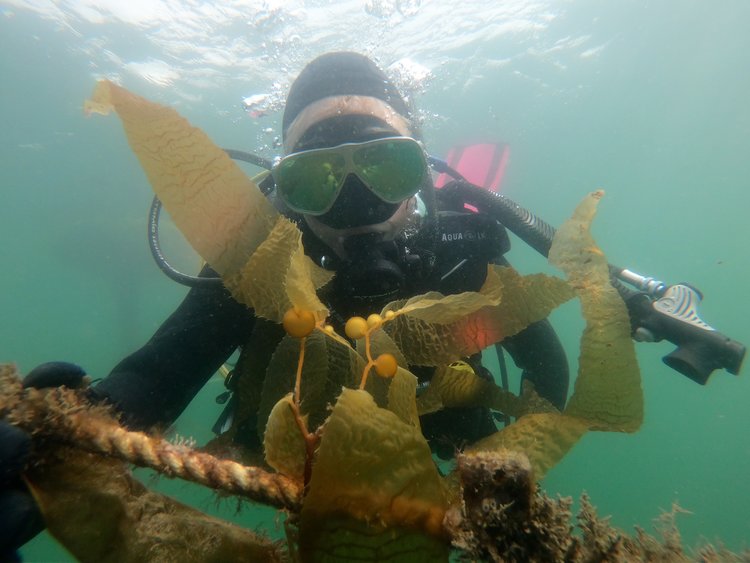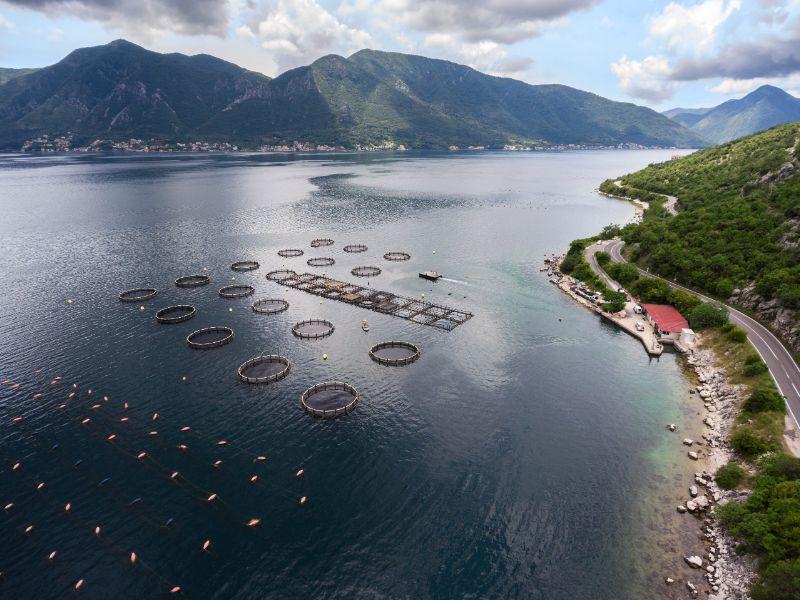Aquaculture

Algae Aquaculture
Dr. Matt Edwards
Partnering with California’s first regenerative ocean farm, Sunken Seaweed, the Kelp Ecology Lab researches ecosystem-focused cultivation methods of multipe species of algae, inlcuding those that have potential as a food crop, such as Ogo (Gracilaria Pacifica) and Sea Lettuce (Ulva lactuca), as well as some that have potential for biofuel and fertilizer, such as Giant Kelp (Macrocystis pyrifera).

Echinoculture of Purple Urchins
Dr. Brian Hentschel, Dr. Todd Anderson, & Renee Angwin
In the last ten years, overgrowths of purple sea urchins along the coast of California have led to “urchin barrens” where urchins have devoured the kelp and turned the kelp forest into a degraded habitat akin to a clear-cut forest on land. Because urchins can live for a long time with little to no food, their presence also prevents the regrowth of kelp forests. One approach to address this issue is to harvest the urchins and feed them in aquaculture tanks on land until their roe can be harvested for sushi. This could provide both high-value seafood while at the same time restore the many ecological benefits of healthy kelp forests. Called “urchin ranching,” this technique has proven successful in Norway, Japan, and Canada, but is not yet in practice in the US.
This project aims to develop techniques to turn a destructive pest into a valuable seafood product. The researchers conduct experiments to determine the feasibility and specific aquaculture methods needed to implement a new aquaculture industry for the purple urchin in California. Specifically, they work to determine the amount and timing of artificial feed that urchins need over a nine-week time period to develop marketable roe, and the optimal stocking density for urchins in a land-based recirculating aquaculture facility.

Offshore Finfish Farms
Dr. Jeremy Long
Despite strong interests in developing offshore finfish aquaculture in California, no offshore farms exist. Development of an offshore finfish industry has been slowed by concerns related to potential environmental impacts, yet it has been difficult to define and address the real impacts of finfish aquaculture given the lack of farms in the state. To address the potential impacts and move forward in developing an aquaculture industry, the state needs better information about the actual impacts—both positive and negative—of specific farming practices in similar locations.
This project assesses the impact of a tuna ranch just south of the US-Mexico border on wild seabirds and nearby island ecosystems. Seabird nesting critically links marine and terrestrial ecosystems, and is therefore a useful marker for potential ecosystem impacts of offshore finfish farms. The researchers conduct seabird surveys and use isotope analysis of modern and historic plant and animal tissues to explore how the tuna ranch has affected coastal ecosystems of the Coronado Islands. These data are compared to a nearby site lacking significant densities of nesting seabirds – Cabrillo National Monument.
The researchers use these data to update a hotspots map that identifies the best locations for siting potential finfish farms off the coast of Southern California.
